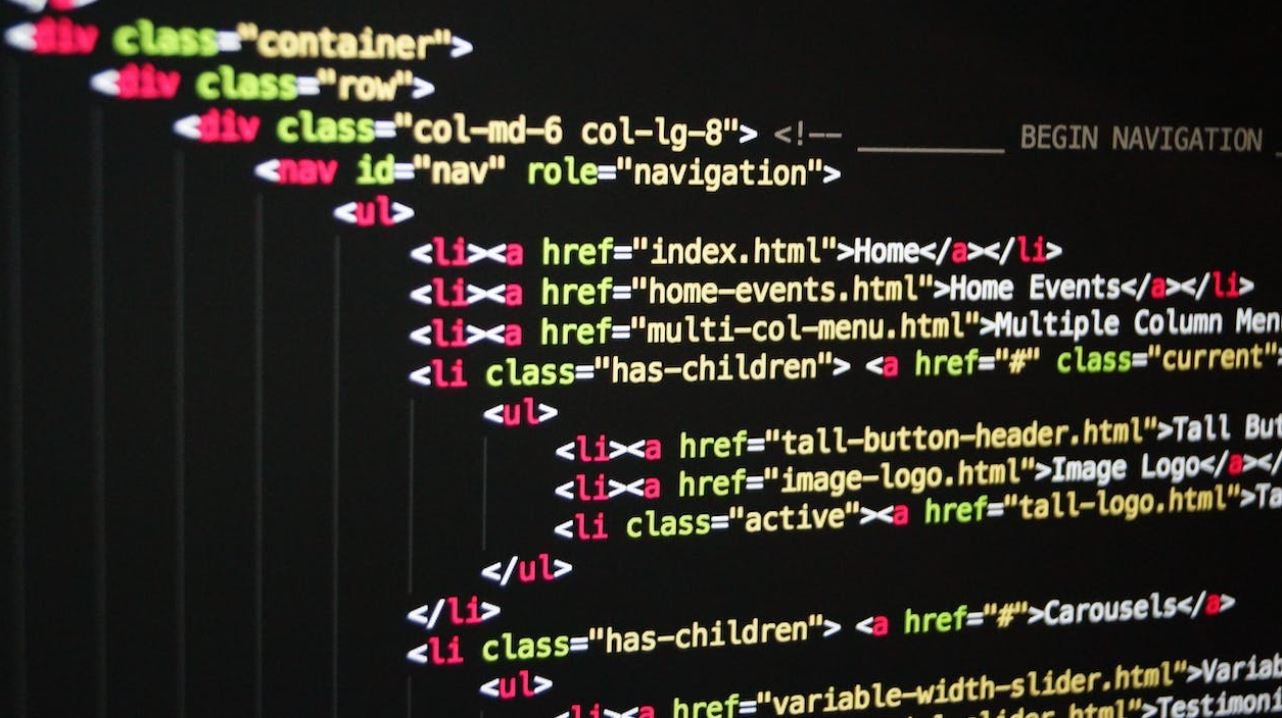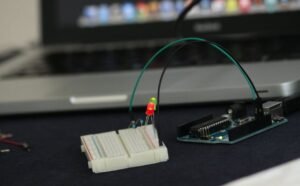AI Tools for Quality Assurance
Quality assurance is essential in every software development process. With the advancement of artificial intelligence, AI tools are becoming increasingly popular for helping QA teams improve their efficiency and effectiveness.
Key Takeaways
- AI tools can greatly enhance quality assurance processes.
- They offer automated testing, anomaly detection, and intelligent data analysis.
- AI tools improve accuracy, speed, and reduce human error in QA.
The Benefits of AI Tools in Quality Assurance
AI tools provide several benefits in quality assurance:
- **Automated Testing**: AI-powered bots can perform repetitive tests quickly and accurately, freeing up human testers’ time for more complex tasks.
- **Anomaly Detection**: AI algorithms can identify unusual patterns or behaviors in the software, flagging potential defects or vulnerabilities.
- **Intelligent Data Analysis**: AI tools can analyze large datasets to detect patterns, trends, and potential performance issues, helping QA teams make data-driven decisions.
*AI tools take quality assurance to the next level by combining automation, anomaly detection, and intelligent analysis in one powerful package.*
Examples of AI Tools for Quality Assurance
There are various AI tools available that offer different capabilities for quality assurance:
- **Test Automation Tools**: AI-based tools like TestProject, Applitools, and Testim provide automated testing capabilities to speed up the QA process and improve test coverage.
- **Anomaly Detection Tools**: Tools like Sentry and LogRocket use machine learning algorithms to identify and troubleshoot abnormal behavior in real-time, helping teams address issues promptly.
- **Data Analysis Tools**: AI-driven tools like Kibana and Splunk capture and analyze log data, allowing QA teams to gain insights into system performance and identify bottlenecks.
*These AI tools empower QA teams to streamline their processes, detect anomalies, and make data-backed decisions.*
Table 1: Comparison of Test Automation Tools
| Tool | Features | Integrations |
|---|---|---|
| TestProject | Codeless automation, web and mobile testing, cross-browser compatibility | Jenkins, Jira, Zapier |
| Applitools | Visual testing, automated visual AI comparisons, responsive web design testing | Selenium, Appium, Jenkins |
| Testim | Self-healing tests, parallel execution, intelligent recommendations | Jenkins, CircleCI, Slack |
Table 2: Anomaly Detection Tool Comparison
| Tool | Key Features | Supported Environments |
|---|---|---|
| Sentry | Error tracking, real-time event capture, issue resolution workflow | Web, mobile, servers |
| LogRocket | Session replay, JavaScript error tracking, network request monitoring | Web, mobile, servers |
Table 3: Data Analysis Tools Comparison
| Tool | Features | Supported Platforms |
|---|---|---|
| Kibana | Log analysis, visualization, dashboard creation | Elasticsearch, Amazon ES, Azure |
| Splunk | Machine learning, real-time analytics, alerting | On-premises, cloud |
Conclusion
AI tools have revolutionized quality assurance, offering automated testing, anomaly detection, and intelligent data analysis capabilities. By integrating AI tools into their processes, QA teams can improve accuracy, speed, and reduce human error. Utilizing these powerful tools empowers QA professionals to streamline their workflows and make informed decisions based on data-driven insights.

Common Misconceptions
Misconception: AI tools can replace humans in quality assurance
One common misconception is that AI tools have the capability to completely replace human testers in quality assurance processes. This is not true as AI tools are designed to assist, not replace, human testers.
- AI tools lack human intuition and problem-solving abilities.
- Human testers have contextual understanding and can make subjective judgments.
- AI tools require human supervision to ensure accuracy and reliability.
Misconception: AI tools can detect and fix all bugs
It’s a common assumption that AI tools have the power to detect and fix all bugs automatically. However, AI tools are not foolproof and have limitations in bug detection and fixing.
- AI tools may miss complex and uncommon bugs that require human reasoning.
- Certain bugs may be overlooked due to insufficient training data in AI models.
- Not all bugs can be fixed automatically without human intervention.
Misconception: AI tools are a one-time investment
Some people have the misconception that AI tools for quality assurance are a one-time investment and don’t require further maintenance and updates. However, AI tools need continuous support and updates to remain effective.
- AI models need regular training with up-to-date data to improve performance.
- Technological advancements require updates to AI tools to stay relevant.
- Bug fixes and improvements may be required as new issues arise.
Misconception: AI tools can handle all types of software testing
It’s important to note that AI tools may not be suitable for all types of software testing. While they can be effective in some scenarios, other testing methods may still be required for comprehensive quality assurance.
- Highly complex and domain-specific software may require specialized testing approaches.
- AI tools may not be suitable for rigorous security testing and vulnerability identification.
- Non-functional testing aspects like performance and usability may need human evaluation.
Misconception: AI tools can be implemented without any training or expertise
Many people assume that implementing AI tools for quality assurance is a straightforward task with no need for training or expertise. However, successful implementation and utilization of AI tools require proper training and expertise.
- AI tools need to be trained with relevant datasets to achieve accurate results.
- Users need to understand AI tool limitations and potential biases to interpret results correctly.
- Proper configuration and integration with existing QA processes requires expertise.

Introduction
In recent years, artificial intelligence (AI) has revolutionized quality assurance in various industries. AI tools have the potential to detect and identify defects efficiently, leading to enhanced productivity and reduced costs. This article explores ten fascinating examples of AI tools for quality assurance, showcasing their capabilities and impact.
1. Enhancing image recognition
AI tools equipped with deep learning algorithms can accurately identify and classify objects within images, enabling efficient inspection and quality control processes.
2. Speech recognition for call center quality monitoring
By utilizing natural language processing, AI-powered speech recognition systems can analyze customer interactions in call centers, identifying sentiment, keywords, and other parameters to enhance quality monitoring.
3. Predictive maintenance in manufacturing
Through analyzing historical data and real-time sensor monitoring, AI tools can predict equipment failure probabilities accurately. This proactive approach optimizes maintenance schedules, reducing unplanned downtime and maximizing operational efficiency.
4. Automated code review
AI-based code review tools parse and analyze software code, detecting defects, vulnerabilities, and ensuring compliance with coding standards. This automation helps improve code quality and reduces the potential for errors.
5. Intelligent anomaly detection
AI-powered anomaly detection systems are capable of analyzing large datasets and identifying abnormal patterns or outliers. These tools are invaluable in quality assurance, detecting defects that may have been overlooked by manual inspection methods.
6. Virtual and augmented reality simulations
Through virtual and augmented reality technologies, AI can create simulated environments for quality testing. This approach eliminates the need for physical prototypes, making testing more cost-effective and efficient.
7. Automated visual inspection
AI-based visual inspection tools leverage machine learning algorithms to identify defects in products with high accuracy. These systems significantly enhance quality control processes, ensuring only flawless items are delivered to customers.
8. Fraud detection in financial transactions
AI algorithms can analyze large volumes of financial data in real-time to identify potential fraud, preventing financial institutions from suffering substantial losses.
9. Sentiment analysis for customer feedback
By utilizing natural language processing, AI tools can analyze customer feedback and reviews, extracting sentiment and valuable insights. This enables companies to improve their products or services based on customer preferences and requirements.
10. AI-powered defect prediction
Through analyzing historical defect data, AI tools can predict the likelihood of defects in a product or process. This enables quality assurance teams to prevent and address potential issues, ensuring high-quality deliverables.
Conclusion
As the examples above illustrate, AI tools offer exciting possibilities for quality assurance across various industries. From image recognition to intelligent anomaly detection, these advanced technologies enhance efficiency, accuracy, and productivity. Implementing AI tools in quality assurance processes can lead to improved customer satisfaction, reduced costs, and increased competitiveness in today’s fast-paced business environment.
Frequently Asked Questions
What are AI tools for quality assurance?
AI tools for quality assurance are software applications that utilize artificial intelligence and machine learning algorithms to automate and enhance quality control processes in various industries. These tools help businesses ensure that products or services meet pre-defined quality standards, by analyzing large amounts of data, identifying patterns, and detecting anomalies or defects.
Why should I use AI tools for quality assurance?
Using AI tools for quality assurance brings several benefits, such as increased accuracy and efficiency in defect detection, reduced manual effort and human error, faster decision-making, and improved overall quality control. These tools can handle complex data analysis tasks and provide valuable insights that can enhance the effectiveness of quality assurance processes.
What types of quality assurance tasks can AI tools accomplish?
AI tools for quality assurance can accomplish a wide range of tasks, including automated inspection of products, identifying anomalies or defects in images or videos, analyzing data sets to detect patterns and trends, predicting and preventing quality issues, optimizing manufacturing processes, and monitoring quality control in real-time. These tools can be customized and trained for specific industry requirements.
How do AI tools for quality assurance work?
AI tools for quality assurance work by processing large amounts of data using machine learning algorithms. They are trained on labeled datasets, where the system learns from examples of correct and incorrect products or processes. The AI model then uses this training to make predictions or classifications on new data, allowing it to identify defects or anomalies with a high level of accuracy.
Can AI tools for quality assurance replace human inspectors?
AI tools for quality assurance can significantly enhance and streamline quality control processes, but they cannot completely replace human inspectors. While AI tools excel at analyzing vast amounts of data and identifying patterns, human inspectors provide critical judgment, context, and decision-making abilities that are necessary in certain situations. Human oversight remains essential to ensure that AI tools are performing effectively and making accurate assessments.
What industries can benefit from AI tools for quality assurance?
Various industries can benefit from AI tools for quality assurance, including manufacturing, automotive, electronics, pharmaceuticals, food and beverage, healthcare, and many others. Any industry that involves quality control processes and requires timely and accurate defect detection can leverage AI tools to improve efficiency, reduce costs, and enhance overall product quality.
How can I integrate AI tools for quality assurance into my existing system?
Integrating AI tools for quality assurance into your existing system depends on the specific tool and your infrastructure. In most cases, AI tools can be integrated through APIs (Application Programming Interfaces). You will need to ensure that the data you want to analyze is accessible to the AI tool and establish the necessary connections and configurations. It is recommended to consult with the AI tool provider or your technical team for detailed integration guidance.
What are the challenges of implementing AI tools for quality assurance?
Implementing AI tools for quality assurance may face some challenges, such as the need for labeled datasets for training the AI models, initial setup and configuration, integration with existing systems, potential resistance to change from human inspectors, and ongoing monitoring and optimization of the AI system’s performance. However, the benefits of utilizing AI tools in quality assurance processes often outweigh these challenges.
Are AI tools for quality assurance cost-effective?
AI tools for quality assurance can provide cost savings in the long run by reducing manual effort, preventing costly quality issues, minimizing production errors, and improving operational efficiency. While the initial implementation and training phase may require investment, the overall cost-effectiveness of AI tools depends on various factors, such as the scale of operations, industry requirements, and the specific AI tool chosen. A thorough cost-benefit analysis can help determine the financial viability.
How can I measure the effectiveness of AI tools for quality assurance?
The effectiveness of AI tools for quality assurance can be measured through various performance metrics, such as accuracy rates, false-negative and false-positive rates, defect detection speed, and the ability to predict quality issues. Additionally, feedback from human inspectors and stakeholders, as well as the impact on overall quality control processes and product quality, can provide valuable insights into the effectiveness of AI tools.





